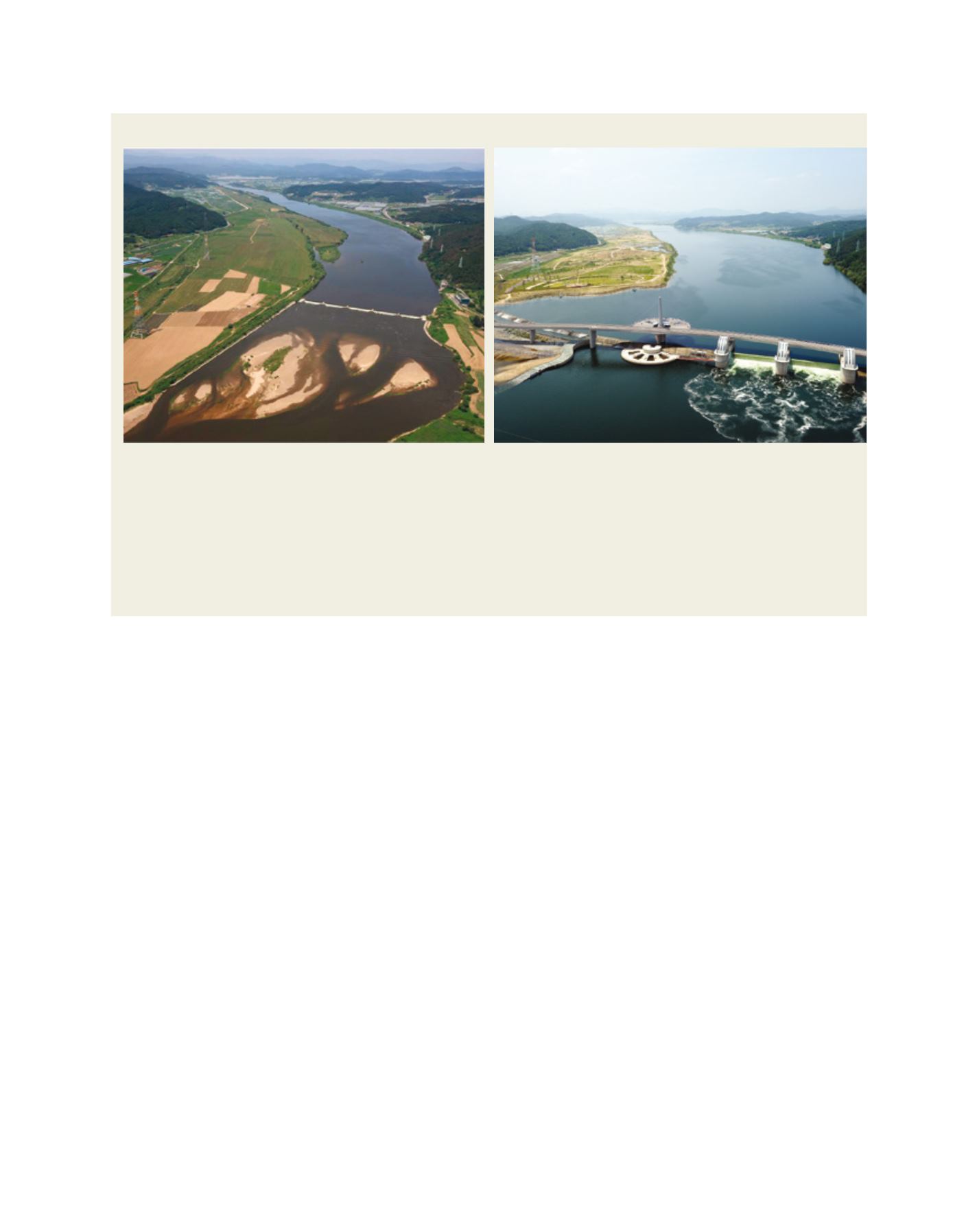

[
] 269
E
conomic
D
evelopment
and
W
ater
resources.
14
K-water is the public corporation directly responsible
for Korea’s water administration, with its activities influenced by
three ministries: Security and Public Administration, Environment,
and Land, Infrastructure and Transport (MOLIT). These minis-
tries consult with each other granting approval, setting regulation,
establishing the national plans and providing subsidies for the
operation of water services and projects. K-water is accountable
to MOLIT, which oversees its operations. In turn, K-water provides
water to industrial consumers and contracts with local govern-
ments to provide them with water through the multi-regional
systems. Local governments then provide water and sewerage
services to households and industry. Thus, the very organizational
framework of water management in Korea involves close coopera-
tion among government agencies, K-water, local governments and
the private sector.
Cooperation was an essential part of Korea’s development. The iconic
example is the Saemaeul Undong, or New Village Movement, during
the 1970s. The movement began with the aim of improving the living
environment of rural farming communities. Due to its early success, the
movement was expanded to a nationwide scale with more ambitious
goals. Village communities were categorized into three groups depend-
ing on their level of self-improvement, with more aid allocated to the
more successful groups. This movement rallied the national spirit to
diligence, self-improvement and collective efforts while at the same time
increasing the competitiveness of villages for government aid. Among
the KRW3.4 trillion invested in the movement during the 1970s, nearly
half was contributed by residents themselves.
15
Furthermore, the move-
ment expanded far beyond the scope of agriculture, giving rise to the
Urban Saemaeul Undong, Regional Saemaeul Undong,
Women’s Saemaeul Undong, Workplace Saemaeul
Undong, Factory Saemaeul Undong, Saemaeul Teenagers
Undong and a number of other Saemaeul movements.
16
As
a result of the movement, besides increases in agricultural
productivity, basic infrastructure was laid through the
paving of roads, maintaining of small rivers and streams,
installation of waterworks and drainage systems, and
provision of electricity and telephones to every village.
More pertinently, the involvement of the private
sector in national water resources development exem-
plifies cooperation for national economic growth. In
the case of the Soyanggang Dam, Hyundai Engineering
and Construction was contracted to build the dam.
The project began in 1967 with actual construction
beginning the following year, and finished in 1973,
upon which the dam became the motive force for
the Miracle on the Han River.
17
Initially, a Japanese
construction company had proposed building a
concrete dam, but given Korea’s limited cement
production capacity, and upon Hyundai’s proposal
for a rock-filled dam that would cost the nation far
less, Hyundai became the private constructor. The
construction was a notable feat, given the notion that
a rock-filled dam could only be feasible economically
up to a height of 30 metres. At a height of 123 metres,
the Soyanggang Dam is the tallest dam in Korea. An
additional, and perhaps greater, significance of the
The Gangjeong Goryeong Weir before (left) and after (right)
Image: K-water
River restoration and sustainable water management
An example of sustainable water management is the Four Major Rivers
Restoration Project.
21
As its name implies, restoring the health of the rivers
is among the large-scale project’s holistic aims, which also include resilience
to extreme weather events and the economic and cultural stimulation of
riverside communities. The project involves the construction of 16 multi-
purpose barrages or weirs (completed in 2012) and dredging, as well as
the revitalization of the riverside into ecological parks, camping sites, sports
facilities, docks and nearly 1,800 km of cycle paths. These recreational
areas have increased the value of the rivers and adjacent land and have
promoted economic activity. Natural waterways and fish paths have also
been restored. The barrages or weirs have led to the decrease in flood level
of the main river by 2-4 metres despite record rainfall. Flood damage has
been greatly reduced as a result, even though four typhoons passed through
the country in 2012. The project has also secured 1.17 billion m
3
of water
resources, ensuring stable water supply despite the severe droughts of May
and June the same year. Thus, the project symbolizes green growth through
reduced economic loss, economic stimulation in the waterfront areas, and
improved water quality and restored natural waterway function.


















